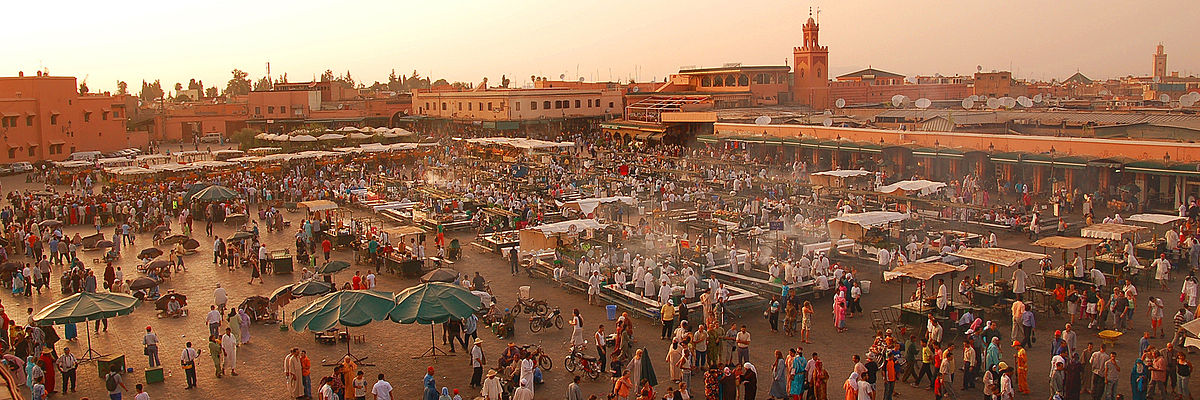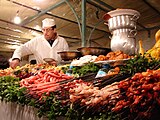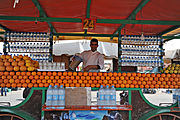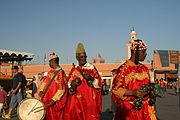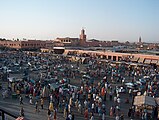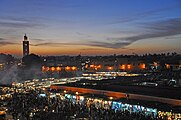Djemaa el Fna
The Djemaa el Fna ( Arabic جامع الفناء, DMG ǧāmiʿ al-fanāʾ , orجامع الفنا / ǧāmiʿ al-fanā ) is the central marketplace in Marrakech , Morocco . The meaning of the name is controversial. In Arabic, Djemaa el Fna means assembly of the dead . This name comes from the fact that the sultans at the time of the Almohads used the place as a place of execution and displayed impaled heads here.
Today the square is valued by tourists and locals alike for its oriental atmosphere. In the evenings there is a hustle and bustle with jugglers and snake charmers , storytellers, fortune tellers, artists and musicians, and there are stalls selling culinary specialties from the region.
The Jemaa el-Fna Square cultural area was the first to be included in the newly created UNESCO list of Masterpieces of the Oral and Intangible Heritage of Humanity in 2001 and has been on the Representative List of the Intangible Cultural Heritage of Humanity since 2008 .
In the fiction literature, the place has been thematized in many ways, u. a. by Elias Canetti ( The Voices of Marrakech ), Hubert Fichte ( The Place of the Hanged ), Juan Goytisolo ( Angels and Pariah ), Bodo Kirchhoff ( Parlando ), Christoph Leisten ( Marrakech, Djemaa el Fna ) and Michael Fisch ( khamsa ). Juan Goytisolo, who has lived near the square for a long time and who repeatedly refers to its phenomena in his literary work, also played a decisive role in the inclusion of the square as a UNESCO World Heritage Site.
On April 28, 2011, at least 14 people died and 20 others were injured, including tourists , in a terrorist attack in Café Argana.
Djemaa el Fna in the evening. The Argana café in the background
Web links
Coordinates: 31 ° 37 ′ 32.9 " N , 7 ° 59 ′ 21.8" W.

